The Garden Helper's Plant of the Day ArchiveThe Plants of the Day for November 2010Below you will find an index of all the plants that have been profiled as aPlant of the Day at The Garden Helper and The Gardener's Forum |
More Plants and FlowersPlants and Flowers for the Current MonthOctober 2010 January 2011 February 2011 March 2011 April 2011 May 2011 June 2011 July 2011 August 2011 The Plant of the Week 2011 The Plant of the Week 2012 |
November 1, 2010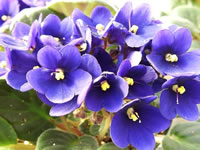 African Violet Saintpaulia ionantha Their attractive, velvety foliage, compact growing habit and wide variety of long blooming flower colors have made the African Violet the most popular flowering house plant in the world. |
November 2, 2010 Venus Fly Trap Dionaea muscipula Venus Fly Traps are quite easy to grow, as long as they are given the proper growing conditions. These insectivorous plants lure their prey using a sweet smelling nectar. Snap! |
November 3, 2010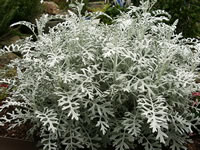 Dusty Miller Senecio cineraria Dusty Miller are compact, mound forming, evergreen perennial plants that are grown as annuals in cooler regions. They are great for borders or as companion plantings for brightly colored annual flowers. |
November 4, 2010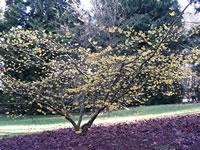 Witch Hazel Hamamelis mollis Witch Hazel is hardy to USDA Zone 5 and is one of the earliest of all blooming shrubs, providing you with up to eight weeks of showy, fragrant flowers beginning in early February. The foliage turns to a bright yellowish-orange in the fall. |
||
November 5, 2010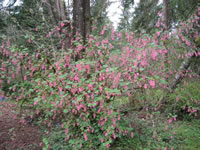 Red Flowering Currant Ribes sanguineum This 6-10 foot tall deciduous shrub is hardy in USDA Planting Zones 5-10. In early spring it produces pendulous clusters of red or pink flowers that attract and feed hummingbirds, bees and butterflies. The small berries are eaten by wild birds. |
November 6, 2010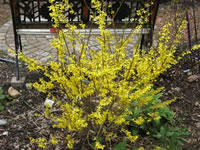 Golden Bells Forsythia intermedia One of the earliest signs that spring has arrived, is when the Forsythia bursts into a profusion of yellow blossoms spreading from the ground to the tip of each graceful, cascading branch. |
November 7, 2010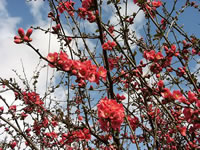 Flowering Quince Chaenomeles speciosa For a few brief weeks in late winter to early spring, when there is little to enjoy in the garden, the Flowering Quince bursts into brilliance as the brightly colored flowers emerge from the leafless stems. |
November 8, 2010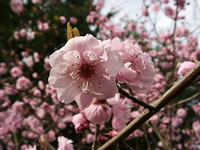 Flowering Plum Prunus blireiana Flowering Plums produce an abundance of fragrant, one inch pink flowers early in the spring, followed later by deep purple foliage which turns green by mid-summer. The foliage changes back to a deep reddish-purple in the fall. |
November 9, 2010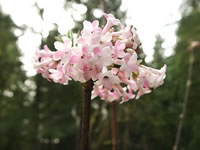 Pink Snowball Bush Viburnum 'Pink Dawn' Pink Dawn Viburnums produce clusters of small red buds that open to fragrant pink flowers in from mid-winter to early spring.These deciduous shrubs grow to a height of 8-10 ft. tall and 6 ft. wide and are hardy in USDA Zones 5-9 |
||
|
|
||||||
November 10, 2010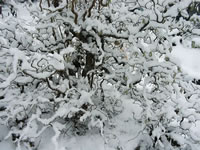 Harry Lauder's Walking Stick Corylus avellana 'Contorta' Discover the true inner beauty of Harry Lauder's Walking Stick... The fantastically twisted, gnarled, contorted, spiraling branches will quickly capture your imagination. Hardy in USDA zones 3-9. |
November 11, 2010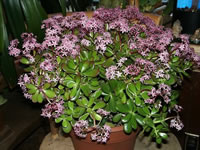 Jade Tree Plants Crassula argentea The Jade Plant originated in South Africa, and has been grown as a house plant in Europe and America for a hundred years. Very easy plants to grow if their needs are understood and met. Hardy in USDA zones 9-11. |
November 12, 2010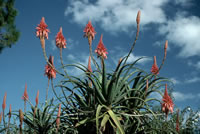 Aloe Vera Aloe barbadensis If grown outdoors, plant in full sun, or light shade. Soil should be moderately fertile, and fast draining. Flowers are a favorite of hummingbirds. Fertilize in spring with half strength, bloom fertilizer. Hardy in USDA zones 10-11. |
November 13, 2010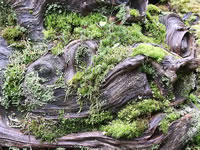 Ornamental Moss Mosses grow naturally in most temperate areas of the world. They are primarily found growing in lightly shaded areas or where there are periods of sun in the morning or late afternoon. Very usable for creating a terrarium! Gallery of Mosses |
November 14, 2010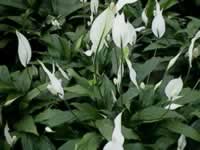 Peace Lily Spathiphyllum floribundum Peace Lily Plants prefer bright filtered light, but will survive in low interior light. They should be kept in a warm environment (68°-85° daytime temperature) with a 10 degree night time drop. Hardy in zones 10-11. |
||
November 15, 2010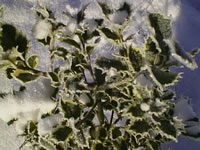 Variegated Holly Ilex aquifolium The male and female flowers of the holly tree are produced on separate plants. To ensure berry production, both male and female plants need to be planted within 100 ft. of each other. Hardy in zones 6-8. |
November 16, 2010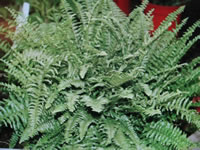 Boston Fern Nephrolepis exaltata Boston Ferns like it cool, and they would be very happy to have a 60 degree room, with bright light. Keep your fern as far away from heat sources as possible, even at the sacrifice of some light. |
November 17, 2010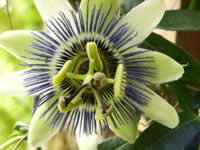 Passion Flower Passiflora incarnata Passiflora incarnata derived the early common name of Maypop from the way it just seems to 'pop' out of the ground in May. Maypops were eventually renamed as the Passion Flower by missionaries in the early 1500s. Hardy in zones 5-9 |
November 18, 2010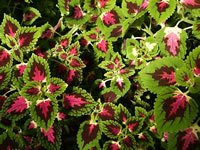 Painted Nettle Coleus blumei Coleus are tender perennials that make nice house plants as long as they receive sufficient light and food. Growing Coleus from seed is really quite easy and quick. Seeds can be sprouted and showing their first colors in as little as two weeks. |
November 19, 2010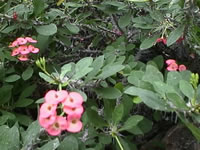 Crown of Thorns Euphorbia milii The Crown of Thorns is a frost tender, multi-stemmed, succulent shrub that originated in Madagascar. Dark green, tear shaped leaves appear randomly on each thorn covered branch. A Crown of Thorns will produce flowers nearly all year, but especially in the winter. Hardy in zones 10-12 |
||
|
|
||||||
November 20, 2010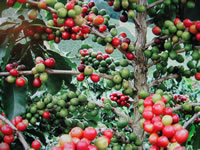 Coffee Bean Tree Coffea arabica It will take you four years before you can harvest your first beans from your own coffee plant. In the meantime, you can enjoy the dark shiny green leaves and fragrant white flowers of this very unique, ornamental plant. Hardy in zones 10-12 |
November 21, 2010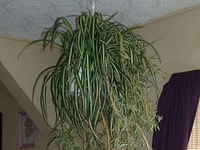 Spider Plant Chlorophytum comosum Spider Plants thrive in bright natural or artificial light but they will sunburn if grown in direct sunlight. Spider Plants are reluctant to produce their offset plantlets unless you decrease their light hours to simulate the naturally shorter days of fall. Hardy in zones 9-11 |
November 22, 2010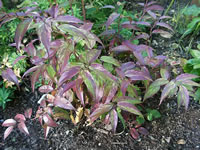 Mountain Doghobble Leucothoe fontanesiana Depending on where you live it might be called a Rainbow Leucothoe, a Scarlet Fetterbush, Drooping Leucothoe, or my favorite plant name of all... the Mountain Doghobble! The foliage is marbled in bright shades of green, pink, cream, burgundy and bronze. Hardy in zones 5-8 |
November 23, 2010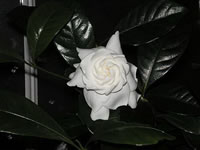 Gardenia Gardenia jasminoides Proper temperatures are necessary for your Gardenia to bloom. Flower buds may fail to form if day temperatures are higher than 70° or if night temperatures are over 65° or below 60°. Hardy in zones 10-11 |
November 24, 2010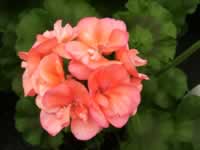 Geranium 'Orange Appeal' Pelargonium hortorum Geraniums should be planted outdoors in a spot where they will receive at least 6 to 8 hours of sunlight daily, but only after all danger of frost is past and the soil has warmed. Geraniums are easily grown from seed. Hardy in zones 9-11 |
||
Search The Garden Helper: